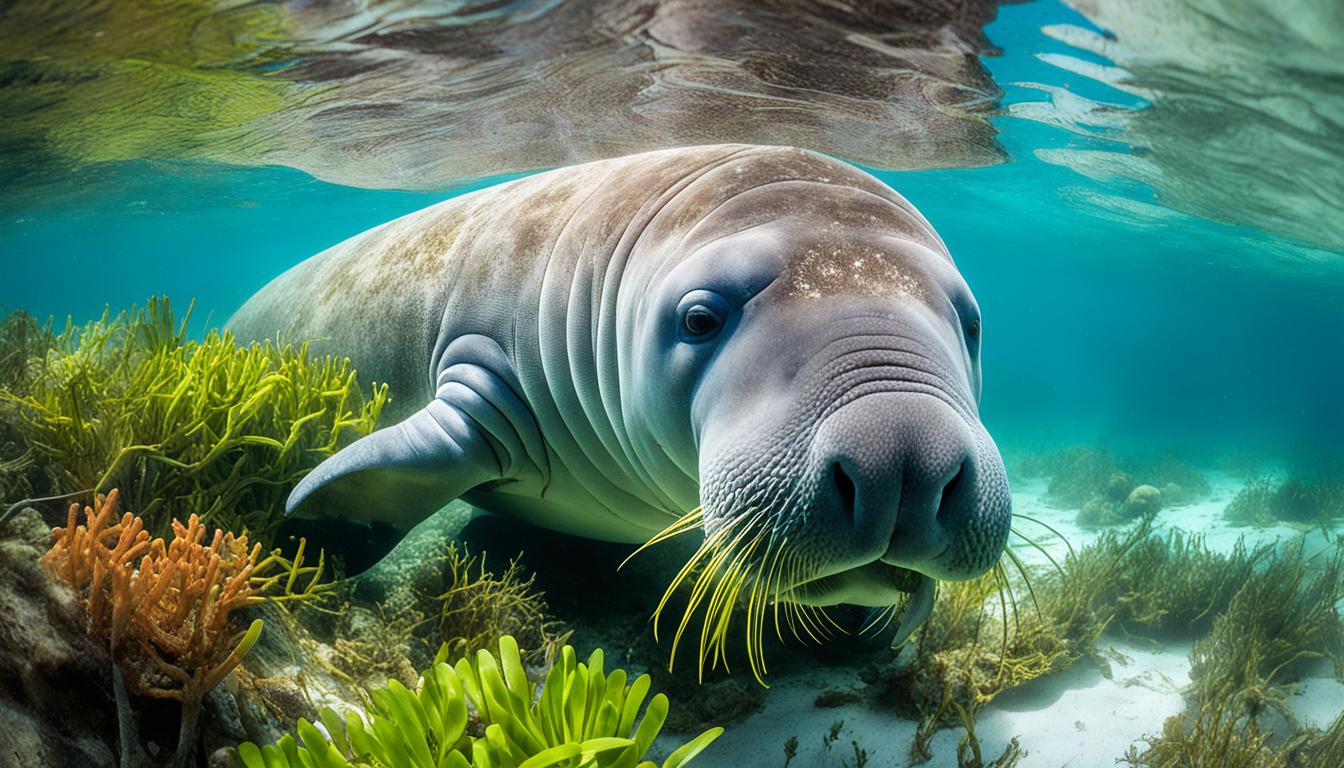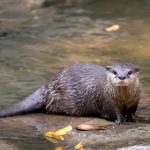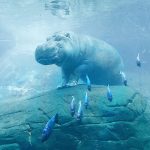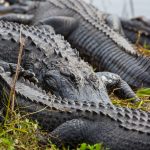Welcome to the fascinating world of manatees! These gentle giants are known as sea cows. They are entirely herbivorous, eating only aquatic plants. So, what do manatees eat? Their diet is diverse, covering warm coastal waters and freshwater systems.
Learning about the manatee diet helps us understand their feeding habits. It also shows their important role in keeping aquatic ecosystems healthy.
Understanding Manatees: The Gentle Giants of the Watery World
Manatees are known as the gentle giants of the sea. They live in warm, shallow waters and rivers. These marine mammals have been linked to mermaid legends, fascinating many people.
Manatees don’t have much blubber, so they can’t handle cold water well. They need warm places to live. Adults can be three to four meters long and weigh about 590 kilograms, showing their size and gentle nature.
Manatees move slowly and are curious about their world. They don’t often interact with predators. Humans now help them survive because of threats like habitat loss and boat accidents.
Manatees eat plants, showing they are herbivores. Their diet depends on aquatic plants. Keeping their homes safe is key to their survival and the balance of their ecosystems.
Manatee Diet Essentials
Manatees are mostly herbivores, eating mostly plants. They love a variety of vegetation, showing their unique manatee food preferences. Knowing what they eat helps us understand their role in nature and their needs.
Herbivorous Nature of Manatees
Manatees eat over 60 types of aquatic plants. They enjoy leaves, roots, and algae. This diet is key for their health and the ecosystem they live in. They eat a lot, up to 10 to 15% of their body weight each day, showing how important these plants are to them.
The Role of Aquatic Plants in Their Diet
Aquatic plants are the main food for manatees. Seagrasses and freshwater plants are crucial for their survival. These plants give them the nutrients they need and help keep the ecosystem balanced. By eating these plants, manatees play a big role in their environments.
| Type of Plant | Common Locations | Impact on Habitat |
|---|---|---|
| Seagrass | Shallow coastal areas | Supports marine life diversity |
| Water Hyacinth | Freshwater lakes | Offers shelter and feeding ground |
| Duckweed | Ponds and slow-moving waters | Enhances nutrient cycling |
What Do Manatees Eat? A Closer Look at Their Feeding Habits
Manatees are gentle grazers that live on aquatic plants. They eat seagrass, algae, and other water plants. Their diet shows how they adapt to different places.
They spend up to seven hours a day eating. Their special lips help them grab and tear food from the bottom. This lets them eat a variety of plants, showing how they adjust to changes in their home.
Manatees like foods rich in nutrients, depending on where they live. In coastal areas, they eat seagrass. In rivers, they eat freshwater plants. This flexibility helps them survive when food is scarce.
It also keeps them healthy and helps them live in changing environments.
Types of Manatees and Their Unique Dietary Preferences
The three manatee species have different manatee food preferences. These preferences show how each species has adapted to its home. They have a wide variety of foods to choose from.
West Indian Manatees and Their Favorite Foods
West Indian manatees live in coastal waters and estuaries. They eat mostly seagrasses and other plant roots. These plants are their main food source and help keep the marine ecosystem healthy.
Amazonian Manatees: A Taste for Freshwater Plants
Amazonian manatees live in the freshwater rivers and lakes of the Amazon Basin. They eat aquatic plants like water lettuce and water hyacinth. These plants are common in their home, giving them the nutrients they need.
African Manatees: Diversified Diet Including Marine Life
African manatees live in both fresh and saltwater. This lets them eat a variety of foods. They eat aquatic plants, fish, and mollusks. This variety helps them survive in different places.
| Species | Habitat | Main Food Sources | Dietary Specialties |
|---|---|---|---|
| West Indian Manatee | Coastal Waters | Seagrasses, Plant Roots | Grazing habits maintain ecosystem health |
| Amazonian Manatee | Freshwater Rivers and Lakes | Water Lettuce, Water Hyacinth | Specializes in freshwater vegetation |
| African Manatee | Freshwater and Coastal Environments | Various Aquatic Plants, Fish, Mollusks | Omnivorous tendencies enrich dietary variety |
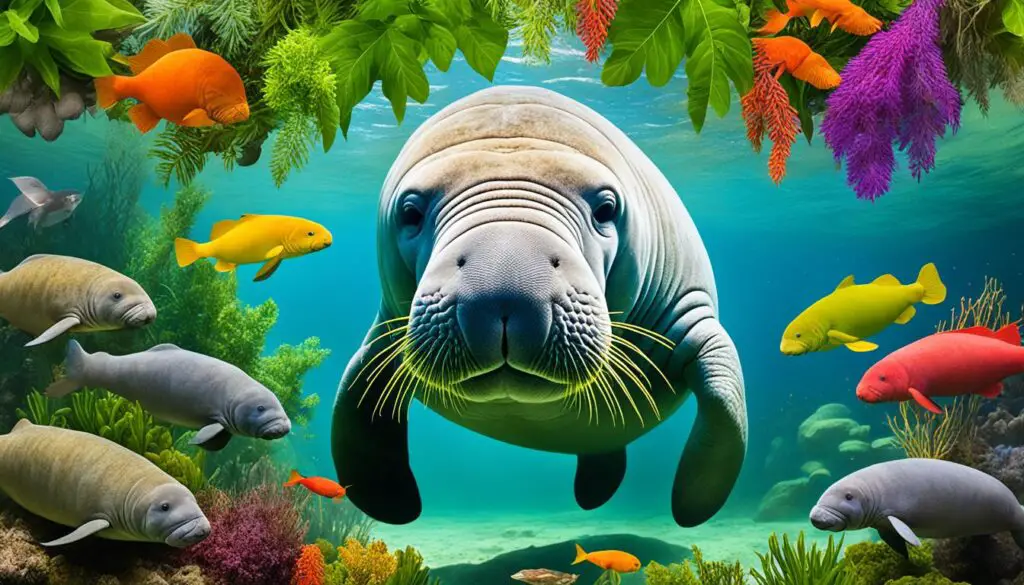
Manatee Grazing Behavior: How They Find Food
Manatees are known for their special grazing behavior. This is key to their survival. They move through the water, using their flippers to search for plants on the bottom. This way, they find and eat their favorite plants.
Their top lip is split into two parts, making it easy for them to pick up food. This special feature helps them feed better and affects the local ecosystem. By eating certain plants, manatees keep the aquatic plants healthy, which is good for the ocean.
Manatees’ eating habits are important for their homes. They trim and eat plants, which helps them grow back. This keeps the marine ecosystem healthy. Learning about how manatees eat shows us how different species are connected in these delicate environments.
Nutritional Requirements of Manatees
Manatees need a special diet to live in the water. They eat a lot of plants because they have a slow metabolism and unique digestive system. These plants are key for their health and happiness.
Daily Food Intake: How Much Do They Eat?
Manatees eat about 50 kilograms or more of plants every day. This helps them get the nutrients they need for energy and health. They eat all day, grazing for hours to get enough food. This helps them stay healthy and keeps their digestive system working right.
Importance of Fiber in Their Diet
Fiber is very important for manatees. It helps them digest tough plants. Their long intestines and simple stomach make sure they get all the nutrients from their food. Eating a lot of fiber keeps their digestive system healthy. By eating high-fiber plants, we can help manatees stay healthy in the wild.

